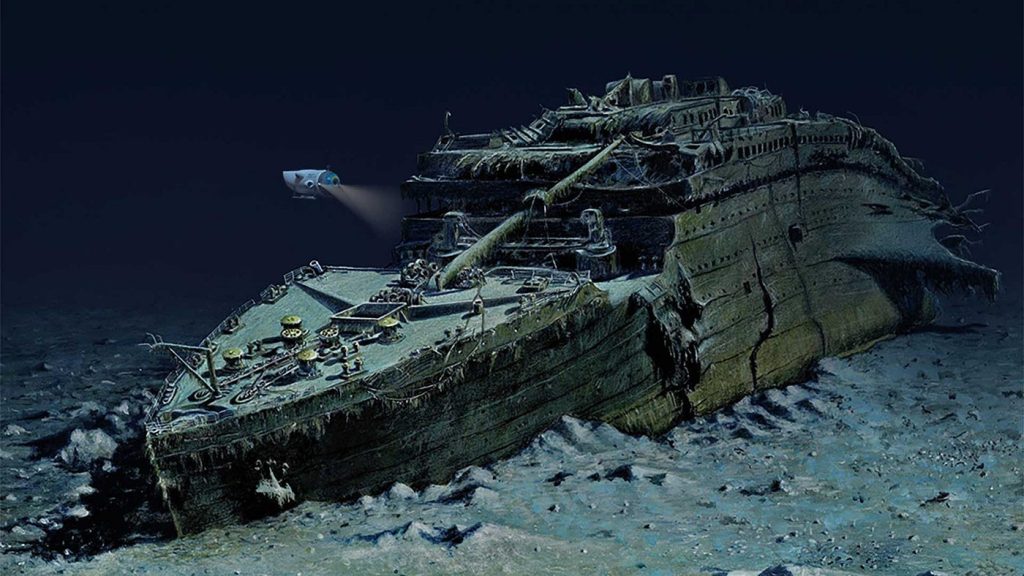Deep beneath the surface of the North Atlantic Ocean, nearly two and a half miles down, rest the remains of one of history’s most renowned ships – the RMS Titanic. Among the deteriorating wreckage, two colossal structures stand as silent witnesses to the past, enduring the relentless pressure of the ocean depths. These are the Titanic’s twin reciprocating engines, towering nearly four stories tall, now guardians of the secrets surrounding the ship’s final moments.
In their heyday, these massive engines represented the pinnacle of early 20th-century engineering. Together, they generated an impressive 30,000 horsepower, complemented by the ship’s 16,000 horsepower center turbine engine. This incredible power enabled the Titanic to reach speeds exceeding 20 knots, with a top recorded speed of 23 knots. The engines’ sheer capability and precision made them a symbol of human innovation and ambition at a time when technological progress was rapidly advancing.

However, the Titanic’s story is not just one of engineering marvels but also of human tragedy. The ship, once celebrated as the epitome of luxury and strength, met its demise on its maiden voyage. Today, its engines stand as solemn reminders of the power and limits of human ingenuity when confronted by the forces of nature.
Exploration of the Titanic’s wreck is a journey into darkness. The site lies in perpetual obscurity, occasionally illuminated by the artificial lights of expeditions. Despite advancements in technology, the vastness of the site makes it impossible to illuminate the wreck in its entirety. Instead, researchers have created a comprehensive understanding of the engines by piecing together a mosaic of smaller images. These images, taken over the course of numerous dives, provide a detailed view of the structures, allowing experts to study their design and condition in unprecedented detail.
The Titanic’s engines are far more than mere remnants of a bygone era. They represent a blend of human ingenuity and ambition, serving as both an inspiration and a poignant symbol of the fragility of human achievements in the face of nature’s overwhelming power. Originally, they were the heart of the ship, driving its incredible speed and symbolizing the confidence of an age that believed it had conquered nature. Now, these engines remind us of the hubris that can come with such confidence, as well as the devastating consequences when ambition outpaces caution.
Despite their current state of decay, the Titanic’s engines continue to captivate people around the world. They inspire countless works of art, literature, and research. From scholarly studies analyzing the engineering feats of the early 20th century to novels and films that bring the Titanic’s story to life, these engines play a central role in keeping the ship’s legacy alive. They are a tangible connection to the past, offering a glimpse into an era defined by bold dreams and remarkable advancements.
The fascination with the Titanic and its engines is not solely about their historical significance but also about what they represent. They embody the delicate balance between human ambition and natural forces. The Titanic was a triumph of human engineering, yet its tragic end serves as a sobering reminder of the unpredictability of nature and the importance of humility in the face of its might.
As researchers continue to study the Titanic’s wreck, the engines remain a focal point of exploration. Their massive, silent presence offers valuable insights into the ship’s construction and the technological capabilities of the time. By examining these engines, experts have gained a deeper understanding of the engineering challenges faced during the early 20th century and the events that contributed to the Titanic’s fate.
The engines also stand as a testament to the resilience of human curiosity. Even after more than a century beneath the waves, they continue to inspire questions and spark the imagination. How were they built with such precision over a century ago? What lessons can modern engineers learn from their design? These silent giants, though no longer functioning, hold a wealth of knowledge for those willing to delve into their mysteries.
Beyond their technical significance, the Titanic’s engines have a profound emotional resonance. They symbolize both the height of human achievement and the depths of human tragedy. For many, they are a reminder of the lives lost on that fateful night and a call to reflect on the fragility of life. The engines’ enduring presence on the ocean floor ensures that the story of the Titanic remains etched in human memory.
The Titanic’s engines also serve as a source of inspiration for future generations. They encourage us to push the boundaries of what is possible while reminding us to respect the forces of nature. Their story is one of innovation, ambition, and resilience – qualities that continue to drive progress in the modern world.
In conclusion, the Titanic’s engines are far more than relics of a ship lost to history. They are a bridge to the past, offering a window into an era of incredible technological achievement and human ambition. Their silent, monumental presence beneath the ocean’s surface reminds us of the delicate balance between human ingenuity and the power of nature. As we continue to explore the Titanic’s wreck, these engines remain central to our understanding of the ship’s story, inspiring and educating us about the lessons it holds for humanity. Through their enduring legacy, the Titanic’s engines continue to captivate the world, ensuring that the ship’s tragic yet inspiring tale will never be forgotten.





